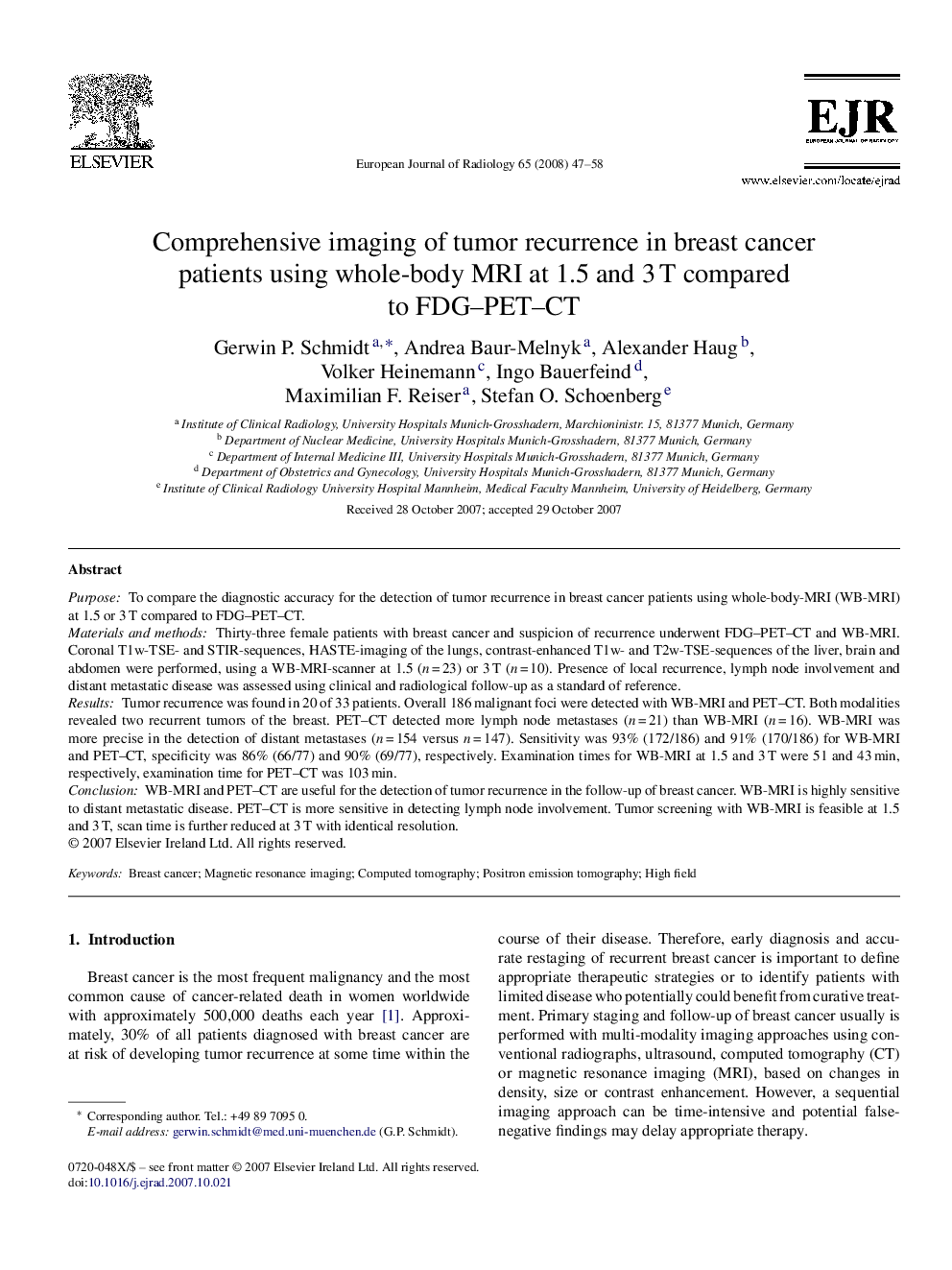| Article ID | Journal | Published Year | Pages | File Type |
|---|---|---|---|---|
| 4228308 | European Journal of Radiology | 2008 | 12 Pages |
PurposeTo compare the diagnostic accuracy for the detection of tumor recurrence in breast cancer patients using whole-body-MRI (WB-MRI) at 1.5 or 3 T compared to FDG–PET–CT.Materials and methodsThirty-three female patients with breast cancer and suspicion of recurrence underwent FDG–PET–CT and WB-MRI. Coronal T1w-TSE- and STIR-sequences, HASTE-imaging of the lungs, contrast-enhanced T1w- and T2w-TSE-sequences of the liver, brain and abdomen were performed, using a WB-MRI-scanner at 1.5 (n = 23) or 3 T (n = 10). Presence of local recurrence, lymph node involvement and distant metastatic disease was assessed using clinical and radiological follow-up as a standard of reference.ResultsTumor recurrence was found in 20 of 33 patients. Overall 186 malignant foci were detected with WB-MRI and PET–CT. Both modalities revealed two recurrent tumors of the breast. PET–CT detected more lymph node metastases (n = 21) than WB-MRI (n = 16). WB-MRI was more precise in the detection of distant metastases (n = 154 versus n = 147). Sensitivity was 93% (172/186) and 91% (170/186) for WB-MRI and PET–CT, specificity was 86% (66/77) and 90% (69/77), respectively. Examination times for WB-MRI at 1.5 and 3 T were 51 and 43 min, respectively, examination time for PET–CT was 103 min.ConclusionWB-MRI and PET–CT are useful for the detection of tumor recurrence in the follow-up of breast cancer. WB-MRI is highly sensitive to distant metastatic disease. PET–CT is more sensitive in detecting lymph node involvement. Tumor screening with WB-MRI is feasible at 1.5 and 3 T, scan time is further reduced at 3 T with identical resolution.
